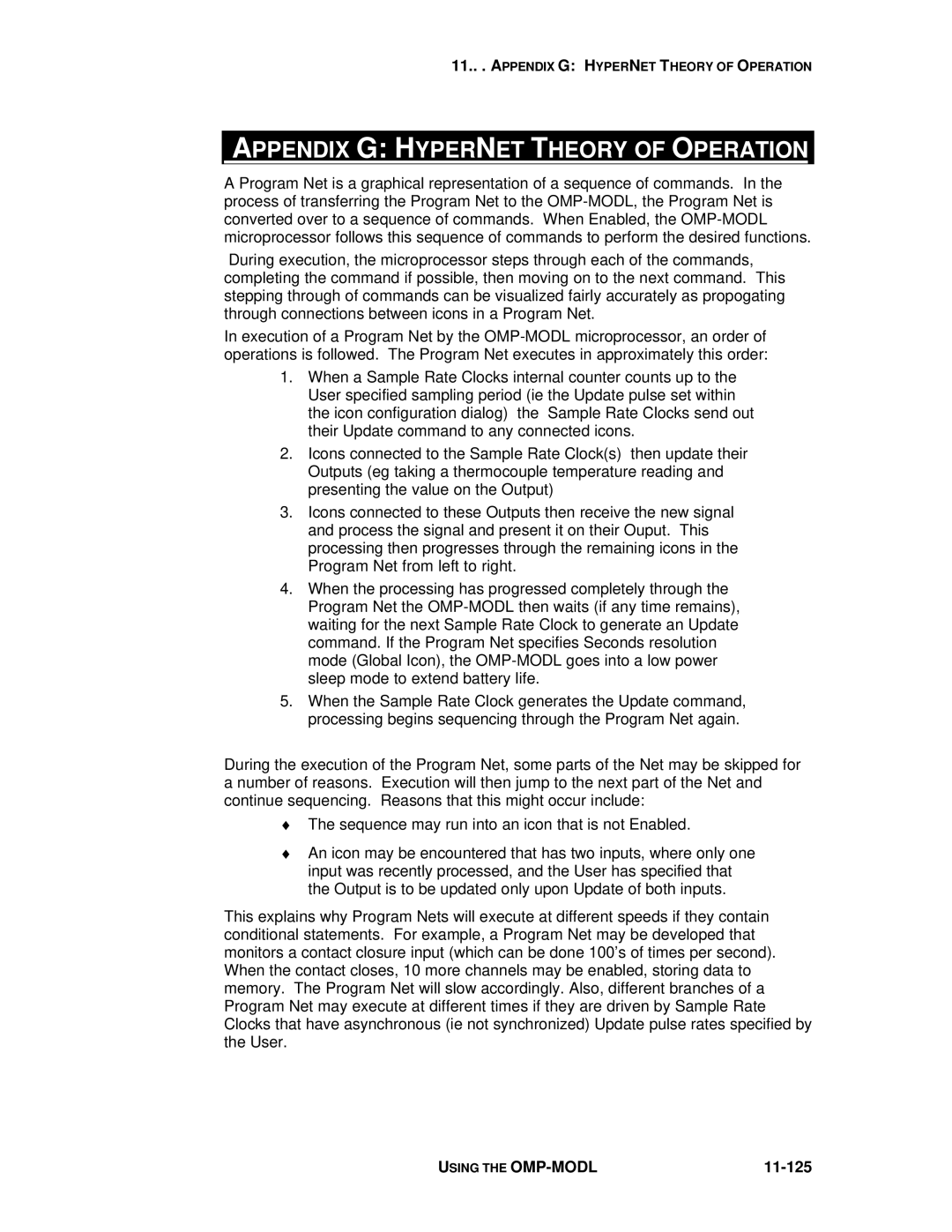11... APPENDIX G: HYPERNET THEORY OF OPERATION
APPENDIX G: HYPERNET THEORY OF OPERATION
A Program Net is a graphical representation of a sequence of commands. In the process of transferring the Program Net to the
During execution, the microprocessor steps through each of the commands, completing the command if possible, then moving on to the next command. This stepping through of commands can be visualized fairly accurately as propogating through connections between icons in a Program Net.
In execution of a Program Net by the
1.When a Sample Rate Clocks internal counter counts up to the User specified sampling period (ie the Update pulse set within the icon configuration dialog) the Sample Rate Clocks send out their Update command to any connected icons.
2.Icons connected to the Sample Rate Clock(s) then update their Outputs (eg taking a thermocouple temperature reading and presenting the value on the Output)
3.Icons connected to these Outputs then receive the new signal and process the signal and present it on their Ouput. This processing then progresses through the remaining icons in the Program Net from left to right.
4.When the processing has progressed completely through the Program Net the
5.When the Sample Rate Clock generates the Update command, processing begins sequencing through the Program Net again.
During the execution of the Program Net, some parts of the Net may be skipped for a number of reasons. Execution will then jump to the next part of the Net and continue sequencing. Reasons that this might occur include:
♦The sequence may run into an icon that is not Enabled.
♦An icon may be encountered that has two inputs, where only one input was recently processed, and the User has specified that the Output is to be updated only upon Update of both inputs.
This explains why Program Nets will execute at different speeds if they contain conditional statements. For example, a Program Net may be developed that monitors a contact closure input (which can be done 100’s of times per second). When the contact closes, 10 more channels may be enabled, storing data to memory. The Program Net will slow accordingly. Also, different branches of a Program Net may execute at different times if they are driven by Sample Rate Clocks that have asynchronous (ie not synchronized) Update pulse rates specified by the User.
USING THE |
|
